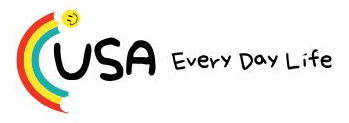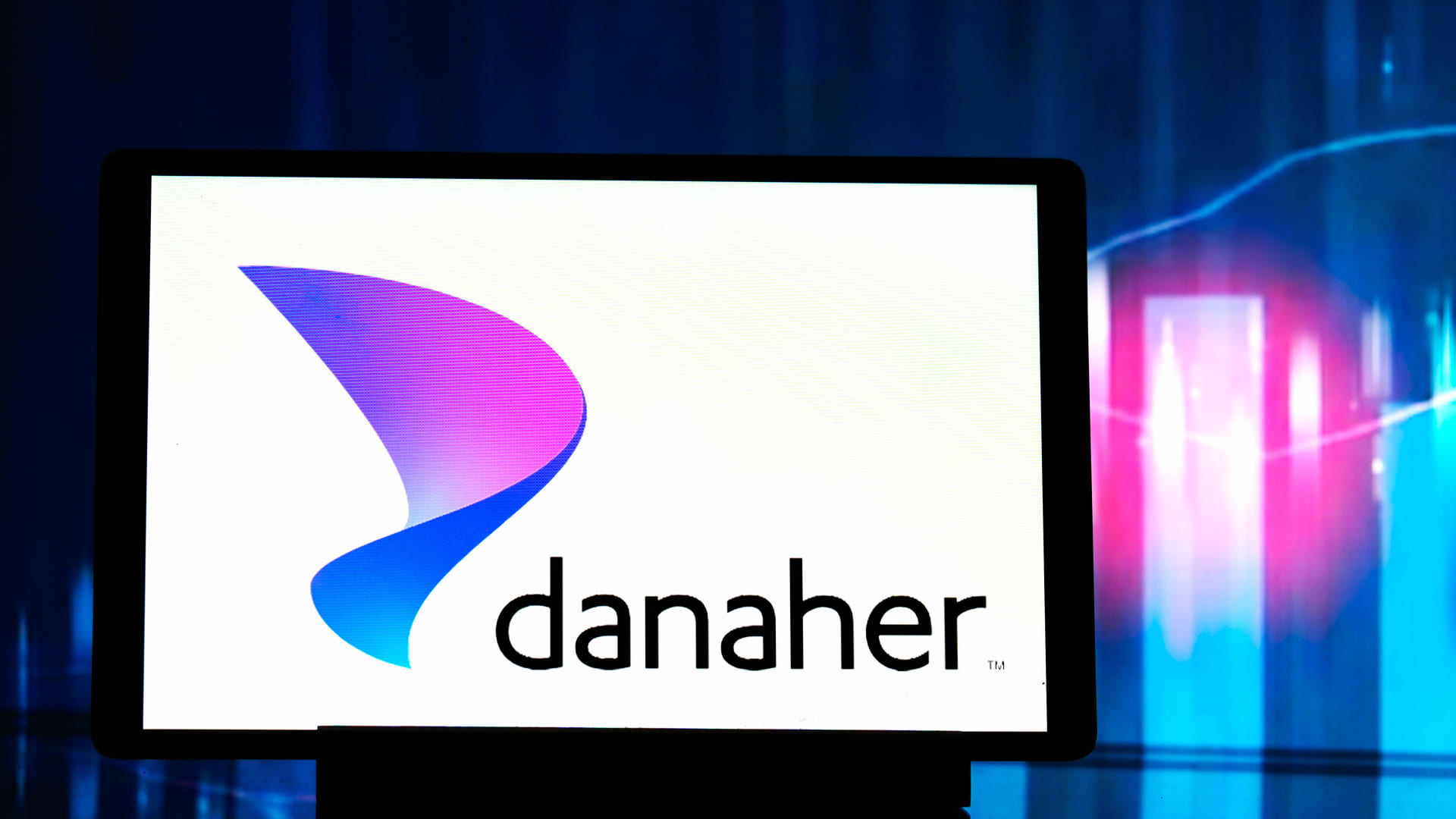Danaher shares on Tuesday climbed more than 6% after the health-care company’s first-quarter results exceeded expectations — and, crucially, its guidance was left mostly intact despite an evolving economic picture. Count us among the investors breathing a sigh of relief. Revenue for the three months ended March 31 declined 1% year over year to $5.74 billion, topping the consensus estimate of $5.59 billion, according to LSEG. Adjusted earnings per share (EPS) totaled $1.88, exceeding the $1.64 estimate, LSEG data showed. On an annual basis, adjusted EPS fell 2.1%. Bottom line Danaher delivered a fairly clean earnings report in a messy, tariff-filled moment — a welcome sign no matter the company. But with the way the once-bankable Danaher has tested our patience and been such a poor-performing stock, Tuesday’s results and outlook mean a bit more. Executives also seem to have a handle on minimizing the earnings’ impact of tariffs. “It’s still got a ways to go,” Jim Cramer said during Tuesday’s Morning Meeting. However, the report is “proof of life” at Danaher, he added. Among the highlights of the quarter: Biotechnology revenue of $1.61 billion topped expectations, up 5.8% year over year, or nearly 7% on a core basis, which backs out the impact of foreign-exchange headwinds. Within that segment is Danaher’s key bioprocessing business — made up of various products and services used to manufacture therapeutics such as monoclonal antibodies. CEO Rainer Blair said on the post-earnings call that bioprocessing is off to a better-than-expected start to the year. Orders were up for a seventh consecutive quarter. Accordingly, Blair said Danaher expects bioprocessing revenue to increase by high-single digits in 2025, compared with previous guidance of 6% to 7%. Companywide, executives said they still project core revenue growth to be roughly 3% this year, with improvements in the bioprocessing outlook offset by slightly more subdued expectations for its life sciences business. Life science’s wide-ranging products are used to “study the basic building blocks of life,” such as DNA and proteins, the company explained in its securities filings. It also has a filtration component serving more diverse end markets such as refineries and beverages. For now, at least, it is clear that executives’ decision to set conservative guidance in January was wise — and that prudent approach was evident in Danaher’s full-year adjusted EPS outlook of $7.60 to $7.75, which was provided Tuesday for the first time. That is basically in line with the FactSet consensus heading into the report. CFO Matt McGrew made clear on the call that if the operating environment doesn’t get worse from here, there is “probably further upside” on earnings in the coming quarters. Rebuilding credibility with investors after a prolonged period of disappointment will take time. But every journey has a first step. Based on everything we saw and heard Tuesday, we’re reiterating our buy-equivalent 1 rating, which has been in place since late March, while lowering our price target to $250 a share from $270. Commentary There’s a lot of green on the chart above, and we especially liked to see better-than-expected results for the following metrics: organic growth, adjusted operating income and margin, and all three operating segments. Sure, expectations were low — but at this point, that is a more desirable setup than what we saw last year when they were generally too high. Unsurprisingly, tariffs were a big topic of conversation on Tuesday’s earnings call, and we liked what we heard about Danaher’s ability to navigate the evolving situation. As the tariffs currently stand, Blair said Danaher expects a roughly $350 million impact for the rest of the year — though, he added, the company believes tariffs will not be this steep by year-end. Nevertheless, Danaher’s plan to offset the tariff hit consists of supply chain adjustments, surcharges, manufacturing footprint changes, and cost reductions. Roughly half of the $350 million headwind is tied to products going to China from the U.S., according to McGrew. That is due to Beijing’s steep retaliatory levies in response to the Trump administration’s import duties. Then the other half of the headwind is products coming into the U.S. from Europe, which are now subject to Trump’s higher tariffs on European imports. “If things get worse here or higher or the actions that we find aren’t enough, we can be much more aggressive if we need to be,” McGrew said. “We’ve got all those levers to pull. I would say everything is on the table here in that situation, if that’s what we get to.” Danaher also shared encouraging updates on its plan, announced in late February, to cut at least $150 million in costs this year. McGrew said Danaher accomplished about $50 million of those reductions in the first quarter, with the remaining $100 million on track to essentially be realized evenly throughout the rest of the year. The finance chief also said Danaher’s current adjusted EPS guidance only accounts for the existing $50 million in cost reductions — once again, a conservative decision. McGrew said he’s confident Danaher will achieve the other $100 million in savings, but the management team just wanted to see “how things play out, especially from a policy perspective, before we get too constructive.” Another discussion point on the call was China, which has become a challenging market for a number of U.S. health-care companies. Similar to what we heard from fellow portfolio stock Abbott Laboratories last week, Danaher’s China results were negatively impacted by the Chinese government’s national strategy to control health-care costs. Danaher’s diagnostics business is where China’s strategy — known as volume-based procurement, or VBP — is most acutely felt. However, it was nice to hear that life sciences demand in China was stable in the first quarter compared with the prior three-month period, and that a modest benefit from the government’s stimulus initiatives was realized. On bioprocessing in China, Blair said, “That continues to be stable as they’ve reached the bottom there, and we’re starting to see a little bit of life.” Additionally, Blair was asked whether the trade war could result in Danaher, as an American company, facing blowback in China. He responded by saying, “We don’t see China looking to move Western suppliers out of their supply chain.” (Jim Cramer’s Charitable Trust is long DHR. See here for a full list of the stocks.) As a subscriber to the CNBC Investing Club with Jim Cramer, you will receive a trade alert before Jim makes a trade. Jim waits 45 minutes after sending a trade alert before buying or selling a stock in his charitable trust’s portfolio. If Jim has talked about a stock on CNBC TV, he waits 72 hours after issuing the trade alert before executing the trade. THE ABOVE INVESTING CLUB INFORMATION IS SUBJECT TO OUR TERMS AND CONDITIONS AND PRIVACY POLICY , TOGETHER WITH OUR DISCLAIMER . NO FIDUCIARY OBLIGATION OR DUTY EXISTS, OR IS CREATED, BY VIRTUE OF YOUR RECEIPT OF ANY INFORMATION PROVIDED IN CONNECTION WITH THE INVESTING CLUB. NO SPECIFIC OUTCOME OR PROFIT IS GUARANTEED.
A Danaher Corporation logo is displayed on a tablet.
Igor Golovnov | SOPA Images | Lightrocket | Getty Images
Danaher shares on Tuesday climbed more than 6% after the health-care company’s first-quarter results exceeded expectations — and, crucially, its guidance was left mostly intact despite an evolving economic picture. Count us among the investors breathing a sigh of relief.





